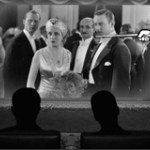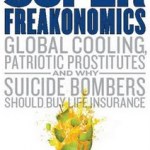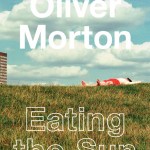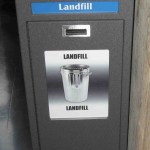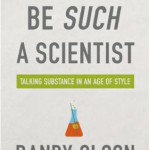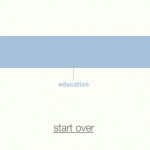Stylized Substance
It is nice to see science and art getting along. The World Science Festival's
event Eye Candy demonstrates how science can help
us understand some of our notions of beauty. Art is equally useful to science,
especially to scientists who envy the artist's ability to parlay an idea into
something visual—something that does not make too many demands on
their audience's time.
Most people are unaware of human impacts on the oceans, such as
overfishing, pollution, and invasive species. This deficiency is in part due to the
ocean itself—the opaqueness of the surface transmits a deceiving
tranquility—…
So much of what the scientists do is less relevant than it could be. This was the motivation behind the theme at the 2010 AAAS annual meeting, Bridging Science and Society.
Our panel discussed non-regulatory means of enhancing cooperation - namely through reputation and shame. Ralf Sommerfeld, a recent graduate who worked with the Max Planck Institute, presented several of his new game theoretical studies showing that gossip and reputation can lead to increases in overall cooperation [1, 2]. This is the theory that underpinned my presentation proposing that we migrate away from guilt-based…
The jellyfish burger digital artist Dave Beck and I created has won an honorable mention award in the illustration section the National Science Foundation Visualization Challenge and was also featured in the New York Times. Watch for the rubbery future of seafood coming to this week's issue of Science, too. And be sure to check out the other winners, too.
I rolled in the New Year like most people -- in a gummy movie theatre watching Avatar. Caveat: go no further if you're worried about spoiling the plot (for a film that, like it or not, stands mostly on its technological innovations).
I don't want to seem like some Cameronophile. I found Avatar too long, for one (and, unlike Daniel Pauly, would never see it twice). It has the typical man vs. technology and man vs. nature themes of futuristic sci-fi. It did have some very cool marine influences (e.g. Christmas tree worms, anemones, comb jellies, hammerheads). But there was one very special…
Randy Olson, a scientist turned filmmaker (his film Flock of Dodos premiered at Tribeca and recently made the Smithsonian blog's list of ten great science films from the 2000s), opened up a new online journal this week where he explores the worlds of science and cinema called The Benshi. The title, as Olson explains, "refers to the tradition the Japanese developed with their silent films in which a humble, friendly little man -- 'the benshi' would stand beside the movie screen with a pointer and explain to the audience who the characters in the film were and what they were saying." Olson…
In 2006, I bought Steven Levitt and Stephen Dubner's first book Freakonomics and, like the four million other people who bought the book, thought it was excellent. It was full of originality with chapters on why parents disadvantage their children with bad names and why crack dealers live with their mothers. For this reason (plus the fact that I spent $30 and drove a total of 3 hours), I had high expectations when I went to see the pair in Seattle last night. Sadly, I left feeling that Levitt and Dubner seem to be suffering from a bad case of overexposure.
I should have seen the…
My review of Brad Matsen's new book Jacques Cousteau: The Sea King is out today at SEED Magazine today (the SEED graphic is so cool). In reviewing the book two things struck me: 1) that I knew actually very little about a man who is considered a founding father of marine conservation and 2) that there had to be a reason for my ignorance (other than the obvious). My hypothesis is that his tumultuous personal life, particularly the loose strings left at death, has contributed to why the Cousteau legacy is fading. See if you agree.
Maya Lin, the architect behind the Vietnam memorial in Washington D.C. among other endeavors, thought she would not be making any more memorials. But her latest and last memorial focuses on the loss of biodiversity using animal sounds and is called "What is missing?". The interactive project is newly installed at the California Academy of Sciences and is designed to show us what we've lost and what we stand to lose. Listen to her talking about her listening cones as a wake up call for humanity, which will be installed in many science museums around the world, at On Point at NPR. Keep a…
Oliver Morton wrote a delightful book all about photosynthesis called Eating the Sun: How Plants Power the Planet, which I reviewed earlier this year for Search Magazine (R.I.P.) under the title "A Song for the Heartless". One of my favorite passages in the book beautifully explains the difference between art and science:
Discoveries feel determined. They are there to be made, and if one person doesn't, another will. This doesn't lessen the achievement; indeed it can give it spice. The thought that 'this is the way the world is--and I am the first to see it as such' is an intoxicating…
Oliver Morton wrote a delightful book all about photosynthesis called Eating the Sun: How Plants Power the Planet, which I reviewed earlier this year for Search Magazine (R.I.P.) under the title "A Song for the Heartless". One of my favorite passages in the book beautifully explains the difference between art and science:
Discoveries feel determined. They are there to be made, and if one person doesn't, another will. This doesn't lessen the achievement; indeed it can give it spice. The thought that 'this is the way the world is--and I am the first to see it as such' is an intoxicating…
Because it is so beautifully concocted, it is tempting to digest every last drop of Mark Slouka's delicious potion ("Dehumanized" published last month in Harper's) without questioning the recipe. That Slouka pits capitalism (or, to be more specific, the puerile, corporate-driven aspects of capitalism) against citizenry was a well articulated but obvious face-off. More subtle (and noxious in its subtlety) was the claim that somehow math and science better equip students for lives as capitalist droids. Here's Slouka:
It troubles me because there are many things "math and science" do well,…
This is a new trash can in the Environmental Sciences building at Western Washington University. I like the "landfill" label.
Myopic spot-prawn lovers might not like the idea of closing some of the oceans to fishing, but California is creating a network of marine protected areas (MPAs) along its coast for one simple reason -- MPAs work. Research by Callum Roberts et al. (2001) published in Science found:
a network of five small reserves in St. Lucia increased adjacent catches of artisanal fishers by between 46 and 90%, depending on the type of gear the fishers used. In Florida, reserve zones in the Merritt Island National Wildlife Refuge have supplied increasing numbers of world record-sized fish to adjacent…
My former supervisor/now boss (and OG of overfishing) has a piece out in The New Republic with the wonderfully garish title of Aquacalypse Now. He explains how the fishing industry can contribute a minuscule amount to the GDP of advanced economies -- less than hair salons -- and yet manage to wield a disproportionate amount of political power. Read the whole article here but beware: NOTHING is as bad as harpooning a manatee.
Greenpeace International is creating a series of animated films to generate interest in their global marine reserves campaign. I like the commentary on technological efficiency, especially the bit about the "ice and dice aerial trawler", in their first piece. See what you think:
Style and substance. When it comes to communicating, that's what matters. This is the central premise of Randy Olson's new book Don't Be Such a Scientist. It might be the central premise of existence.
To understand this book, you have to understand Randy Olson, so the book is part advice, part autobiography--tales from Olson's career as a tenured academic and his unique and therefore bumpy transition to Hollywood. Because he is a bit of an outsider in both worlds, Olson is well positioned to examine the strengths and shortcomings of both science and communicating.
For the sake of…
It seems people prefer flaunting their greenness to hiding it. If that's true, then companies should make their eco-friendly products distinguishable from their conventional (earth destroying) ones.
In their book Nudge, authors Thaler and Sunstein point out that part of the reason for the Toyota Prius' success over other hybrids is that the model is exclusively a hybrid. "People who want to signal their green credentials are much happier in a Prius than a hybrid Camry because no one will know the Camry is a hybrid." Ditto for Ford Escape or the Honda Civic, which also both come in hybrids…
A friend wanted me to see this public service announcement, which is an excellent visual display of quantitative information and a good way to provoke guilt:
When he sent me the link, he routed me through this awesome blog called Information Aesthetics that has been around since 2004 (where have I been?!). It's an excellent compilation of some stylized substance that I have just begun to explore. One of the first gems I came across was a link to the Personas exhibit currently on display at the MIT Museum.
Personas uses sophisticated natural language processing and the Internet to create a…
It's an New York Times oldie but goodie and I think one of the best graphics I've seen: savings versus debt of the average American household through the decades. I'd love to see one of these for fish catches in comparison to marine protected area (MPA) delegation.
Check out this fun and impromptu little Guilty Planet spot made by a friend of mine and founder of Avukado film and photography.
